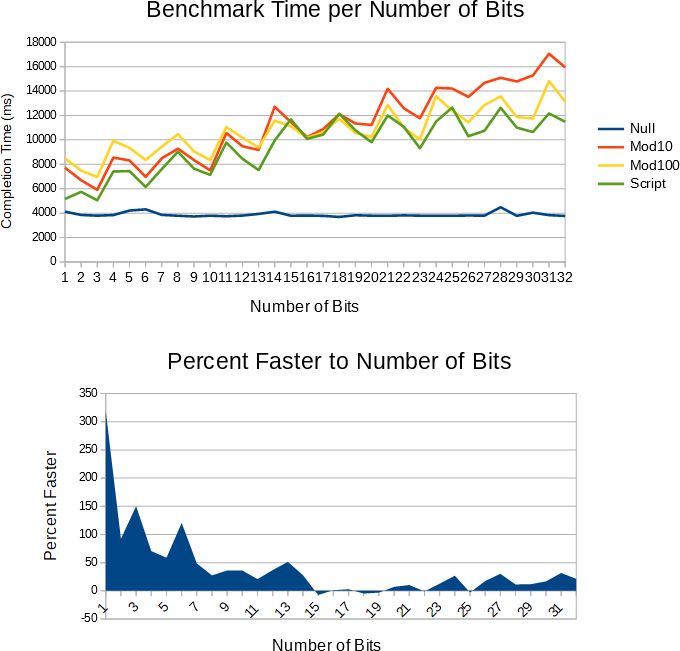数组并不是指针,无论你在这个问题特定的答案中(或者 Stack Overflow 等其他地方)读到了什么误导性的回答。
你不能像所示那样改变数组名称表示的值。
可能令人困惑的是,如果ary是函数参数,它似乎可以调整数组:
void function(uint8_t ary[1024])
{
ary += 213; // No problem because ary is a uint8_t pointer, not an array
...
}
函数参数中的数组与在函数外或函数内定义的数组不同。
您可以执行以下操作:
uint8_t ary[1024];
uint8_t *stack = ary + 510;
uintptr_t addr = (uintptr_t)stack;
if (addr % 8 != 0)
addr += 8 - addr % 8;
stack = (uint8_t *)addr;
这样可以确保stack中的值对齐在8字节边界上,向上舍入。你的问题要求向下舍入到4字节边界,因此代码需要更改为:
if (addr % 4 != 0)
addr -= addr % 4;
stack = (uint8_t *)addr;
是的,你也可以使用位掩码来实现。有两种方法:
addr = (addr + (8 - 1)) & -8; // Round up to 8-byte boundary
或者:
addr &= -4; // Round down to a 4-byte boundary
只有左操作数为2的幂时,此方法才能正确运行 —— 对于任意值都不适用。使用模运算的代码将对任何(正的)模数都能正确运行。
另请参阅:如何仅使用标准库分配对齐内存。
演示代码
Gnzlbg 评论说道:
如果我尝试将例如uintptr_t(2)对齐到1字节边界(两者都是2的幂:2^1和2^0),那么2的幂的代码会出错。结果为1,但应该是2,因为2已经对齐到1字节边界。
这段代码证明了对齐代码是正确的,只要你正确理解上面的注释(现在通过“either or”单词分隔位掩码操作进行了澄清;当我第一次检查代码时,我被卡住了)。
对齐函数可以更紧凑地编写,特别是没有断言的情况下,但是编译器将优化以从所编写的内容和可能编写的内容中产生相同的代码。某些断言也可以更加严格。也许测试函数在做任何其他事情之前应该打印堆栈的基地址。
代码可以检查算术运算是否存在数字溢出或下溢问题,这可能更有可能成为问题,如果您将地址对齐到多兆字节边界;当您保持小于1 KiB的对齐方式时,如果您不尝试越界访问您可以访问的数组,则不太可能出现问题。 (严格来说,即使您进行多兆字节对齐,如果结果将在分配给操作的数组的内存范围内,则不会遇到麻烦。)
#include <assert.h>
#include <stdint.h>
#include <stdio.h>
static inline uint8_t *align_upwards_a(uint8_t *stack, uintptr_t align)
{
assert(align > 0 && (align & (align - 1)) == 0);
assert(stack != 0);
uintptr_t addr = (uintptr_t)stack;
if (addr % align != 0)
addr += align - addr % align;
assert(addr >= (uintptr_t)stack);
return (uint8_t *)addr;
}
static inline uint8_t *align_upwards_b(uint8_t *stack, uintptr_t align)
{
assert(align > 0 && (align & (align - 1)) == 0);
assert(stack != 0);
uintptr_t addr = (uintptr_t)stack;
addr = (addr + (align - 1)) & -align;
assert(addr >= (uintptr_t)stack);
return (uint8_t *)addr;
}
static inline uint8_t *align_downwards_a(uint8_t *stack, uintptr_t align)
{
assert(align > 0 && (align & (align - 1)) == 0);
assert(stack != 0);
uintptr_t addr = (uintptr_t)stack;
addr -= addr % align;
assert(addr <= (uintptr_t)stack);
return (uint8_t *)addr;
}
static inline uint8_t *align_downwards_b(uint8_t *stack, uintptr_t align)
{
assert(align > 0 && (align & (align - 1)) == 0);
assert(stack != 0);
uintptr_t addr = (uintptr_t)stack;
addr &= -align;
assert(addr <= (uintptr_t)stack);
return (uint8_t *)addr;
}
static inline int inc_mod(int x, int n)
{
assert(x >= 0 && x < n);
if (++x >= n)
x = 0;
return x;
}
typedef uint8_t *(*Aligner)(uint8_t *addr, uintptr_t align);
static void test_aligners(const char *tag, Aligner align_a, Aligner align_b)
{
const int align[] = { 64, 32, 16, 8, 4, 2, 1 };
enum { NUM_ALIGN = sizeof(align) / sizeof(align[0]) };
uint8_t stack[1024];
uint8_t *sp = stack + sizeof(stack);
int dec = 1;
int a_idx = 0;
printf("%s\n", tag);
while (sp > stack)
{
sp -= dec++;
uint8_t *sp_a = (*align_a)(sp, align[a_idx]);
uint8_t *sp_b = (*align_b)(sp, align[a_idx]);
printf("old %p, adj %.2d, A %p, B %p\n",
(void *)sp, align[a_idx], (void *)sp_a, (void *)sp_b);
assert(sp_a == sp_b);
sp = sp_a;
a_idx = inc_mod(a_idx, NUM_ALIGN);
}
putchar('\n');
}
int main(void)
{
test_aligners("Align upwards", align_upwards_a, align_upwards_b);
test_aligners("Align downwards", align_downwards_a, align_downwards_b);
return 0;
}
示例输出(部分截断):
Align upwards
old 0x7fff5ebcf4af, adj 64, A 0x7fff5ebcf4c0, B 0x7fff5ebcf4c0
old 0x7fff5ebcf4be, adj 32, A 0x7fff5ebcf4c0, B 0x7fff5ebcf4c0
old 0x7fff5ebcf4bd, adj 16, A 0x7fff5ebcf4c0, B 0x7fff5ebcf4c0
old 0x7fff5ebcf4bc, adj 08, A 0x7fff5ebcf4c0, B 0x7fff5ebcf4c0
old 0x7fff5ebcf4bb, adj 04, A 0x7fff5ebcf4bc, B 0x7fff5ebcf4bc
old 0x7fff5ebcf4b6, adj 02, A 0x7fff5ebcf4b6, B 0x7fff5ebcf4b6
old 0x7fff5ebcf4af, adj 01, A 0x7fff5ebcf4af, B 0x7fff5ebcf4af
old 0x7fff5ebcf4a7, adj 64, A 0x7fff5ebcf4c0, B 0x7fff5ebcf4c0
old 0x7fff5ebcf4b7, adj 32, A 0x7fff5ebcf4c0, B 0x7fff5ebcf4c0
old 0x7fff5ebcf4b6, adj 16, A 0x7fff5ebcf4c0, B 0x7fff5ebcf4c0
old 0x7fff5ebcf4b5, adj 08, A 0x7fff5ebcf4b8, B 0x7fff5ebcf4b8
old 0x7fff5ebcf4ac, adj 04, A 0x7fff5ebcf4ac, B 0x7fff5ebcf4ac
old 0x7fff5ebcf49f, adj 02, A 0x7fff5ebcf4a0, B 0x7fff5ebcf4a0
old 0x7fff5ebcf492, adj 01, A 0x7fff5ebcf492, B 0x7fff5ebcf492
…
old 0x7fff5ebcf0fb, adj 08, A 0x7fff5ebcf100, B 0x7fff5ebcf100
old 0x7fff5ebcf0ca, adj 04, A 0x7fff5ebcf0cc, B 0x7fff5ebcf0cc
old 0x7fff5ebcf095, adj 02, A 0x7fff5ebcf096, B 0x7fff5ebcf096
Align downwards
old 0x7fff5ebcf4af, adj 64, A 0x7fff5ebcf480, B 0x7fff5ebcf480
old 0x7fff5ebcf47e, adj 32, A 0x7fff5ebcf460, B 0x7fff5ebcf460
old 0x7fff5ebcf45d, adj 16, A 0x7fff5ebcf450, B 0x7fff5ebcf450
old 0x7fff5ebcf44c, adj 08, A 0x7fff5ebcf448, B 0x7fff5ebcf448
old 0x7fff5ebcf443, adj 04, A 0x7fff5ebcf440, B 0x7fff5ebcf440
old 0x7fff5ebcf43a, adj 02, A 0x7fff5ebcf43a, B 0x7fff5ebcf43a
old 0x7fff5ebcf433, adj 01, A 0x7fff5ebcf433, B 0x7fff5ebcf433
old 0x7fff5ebcf42b, adj 64, A 0x7fff5ebcf400, B 0x7fff5ebcf400
old 0x7fff5ebcf3f7, adj 32, A 0x7fff5ebcf3e0, B 0x7fff5ebcf3e0
old 0x7fff5ebcf3d6, adj 16, A 0x7fff5ebcf3d0, B 0x7fff5ebcf3d0
old 0x7fff5ebcf3c5, adj 08, A 0x7fff5ebcf3c0, B 0x7fff5ebcf3c0
old 0x7fff5ebcf3b4, adj 04, A 0x7fff5ebcf3b4, B 0x7fff5ebcf3b4
old 0x7fff5ebcf3a7, adj 02, A 0x7fff5ebcf3a6, B 0x7fff5ebcf3a6
old 0x7fff5ebcf398, adj 01, A 0x7fff5ebcf398, B 0x7fff5ebcf398
…
old 0x7fff5ebcf0f7, adj 01, A 0x7fff5ebcf0f7, B 0x7fff5ebcf0f7
old 0x7fff5ebcf0d3, adj 64, A 0x7fff5ebcf0c0, B 0x7fff5ebcf0c0
old 0x7fff5ebcf09b, adj 32, A 0x7fff5ebcf080, B 0x7fff5ebcf080

long可以保存指针的参考文献。我相信你的看法是错误的,但我愿意被证明是错的。 - Jonathan Leffler